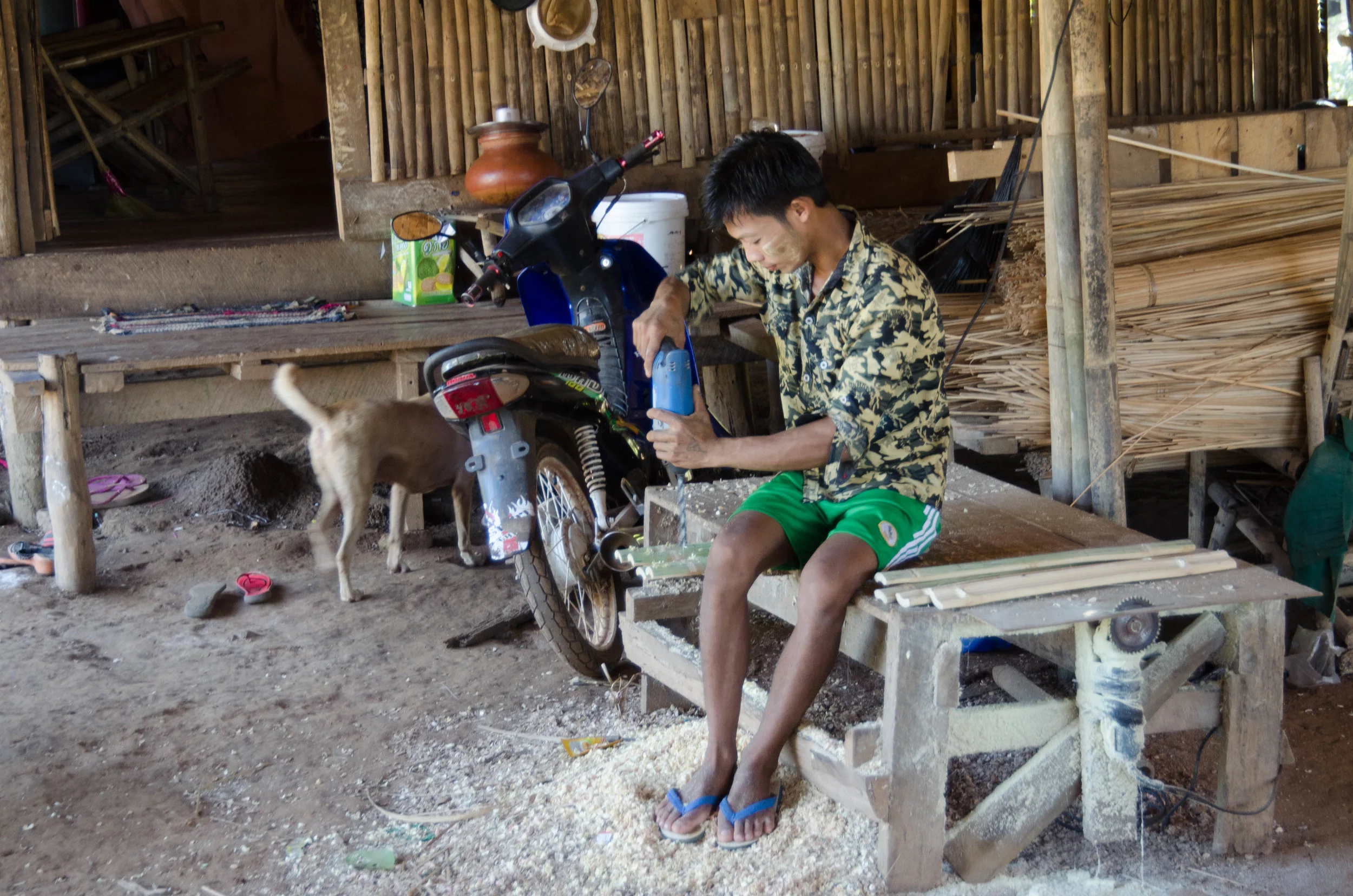Throughout the whole night we had the chanting of Buddhist verses emanating from a loud speaker at a monastery across the valley from our hotel room. This recorded sound was not unpleasantly loud but incessantly repetitive. We acknowledged that this is their custom so it’s up to us to accept the situation.
After a fairly meagre breakfast we clambered into a public truck with thin padded bench seats across the back and undertook the downhill return to our bus which according to the sign outside our hotel was 7 miles and 2 furlongs away. The mountain road in daylight is impressive due to the number of tight ‘S’ bends and the steepness of much of the descent. Our driver was cautious at blind corners by blasting his horn to warn pedestrians and other road users. Because of the dangerous nature of the road some sections are one way for a given period and then become one way in the other direction for a following period.
Truck station, Kyiakhtiyo
We changed over to our bus and then started the long return journey to Yangon.
After an hour of travel we stopped at a factory making bamboo furniture on the side of the road. The work facilities and equipment were primitive with the workers sawing and splitting bamboo with mostly ancient tools except for a power drill and a tiny, blunt electric saw. The chairs, stools and beds that were produced were remarkably strong and yet surprisingly cheap with a bamboo adult’s chair costing just AUD$5.
Nearby we encountered an orchard growing cashew nuts. The trees were flowering at present (it’s winter) and the nuts will be hand harvested in late summer using long poles to reach up into the trees.
A significant section of the road we were taking was being upgraded and widened. There were some machines like mechanical rollers being used but the new road surface was being prepared largely by manual labour. Many workers were down on their haunches placing rocks so as to make a flat surface and other workers were then pouring hot bitumen over the rocks. The spreading and levelling of the bitumen was being done by men with rakes wearing flip-flops (thongs) on their feet.
We next arrived at a road checkpoint where officials were apparently looking out for illegal immigrants as the border with Thailand was quite close to this location. Either side of the checkpoint were lots of roadside shops specialising in selling bamboo furniture, water melons and pomelos which are a large and very tasty grapefruit like fruit.
Our midday stop was at Bago the former capital of the Mon kingdom. Bago was a key trading point in Burma in the 15th century with close links to Thailand (Siam), Sri Lanka (Ceylon) and India. We spent an hour or so wandering around the vast Shwemawdaw pagoda whose golden pinnacle is 114 m high. We were informed that the pagoda had been built to enshrine relics including two of Buddha’s hairs!
We were surprised to encounter quite a number of beggars in the area around the pagoda with several being young girls holding baby siblings one presumes. We then moved to the site of the 15th century Kanbawzathadi Palace. Excavations in this area in 1990 led archeologists to uncover traces of huge teak posts and bricks belonging to the palace of one of the most powerful kings of Burma, King Bayinnaung (1516 – 1581). The building on the site now is both a gaudy and probably fanciful reconstruction of the original palace that was described in 1586 by a visiting Englishman Ralph Fitch as a sumptuously gilded wooden building of great workmanship.
After a lunch break we visited the Shwetalyaung reclining Buddha. This immense structure is 55 m long and 16 m high. It is thought to have been constructed in the year 994 and it lay in the jungle covered by vines and foliage until it was discovered in the 1880s. It has been refurbished and is now enclosed within a very large and unattractive corrugated iron shed. This particular reclining Buddha is not the largest in Myanmar but it is regarded as the best due to its particularly serene expression.
To end the day’s sight seeing we spent some time at Kyaik Pun (Four Figures) Pagoda. This pagoda was built by King Migadippa in the 7th century and then later restored in 1476. It consists of four colossal seated Buddhas placed back to back facing the cardinal points. Each Buddha is about 17 m high. There was a packed bazaar area in an adjacent entrance hallway selling mainly wooden souvenirs but the peanut toffees on sale were much more popular.
The bus ride back in Yangon from Bago took over three hours mainly due to us arriving on the outskirts of Yangon at peak hour (18:00). Yangon’s population is around seven million and the traffic density was incredible with overcrowded roads and lane markings being utterly ignored by most. In the darkness were cars with no lights on and cyclists and motor bikes ducking and weaving in amongst the cars, buses and trucks. Needless to say, the flow of traffic is associated with a near continuous sound of car horns and numerous near misses.
Our hotel in Yangon is the Sule Shangri-La which looks to be a touch of class!
Tomorrow we spend the day in Yangon and the following day our group breaks up and the remaining six of us fly on to Laos.










